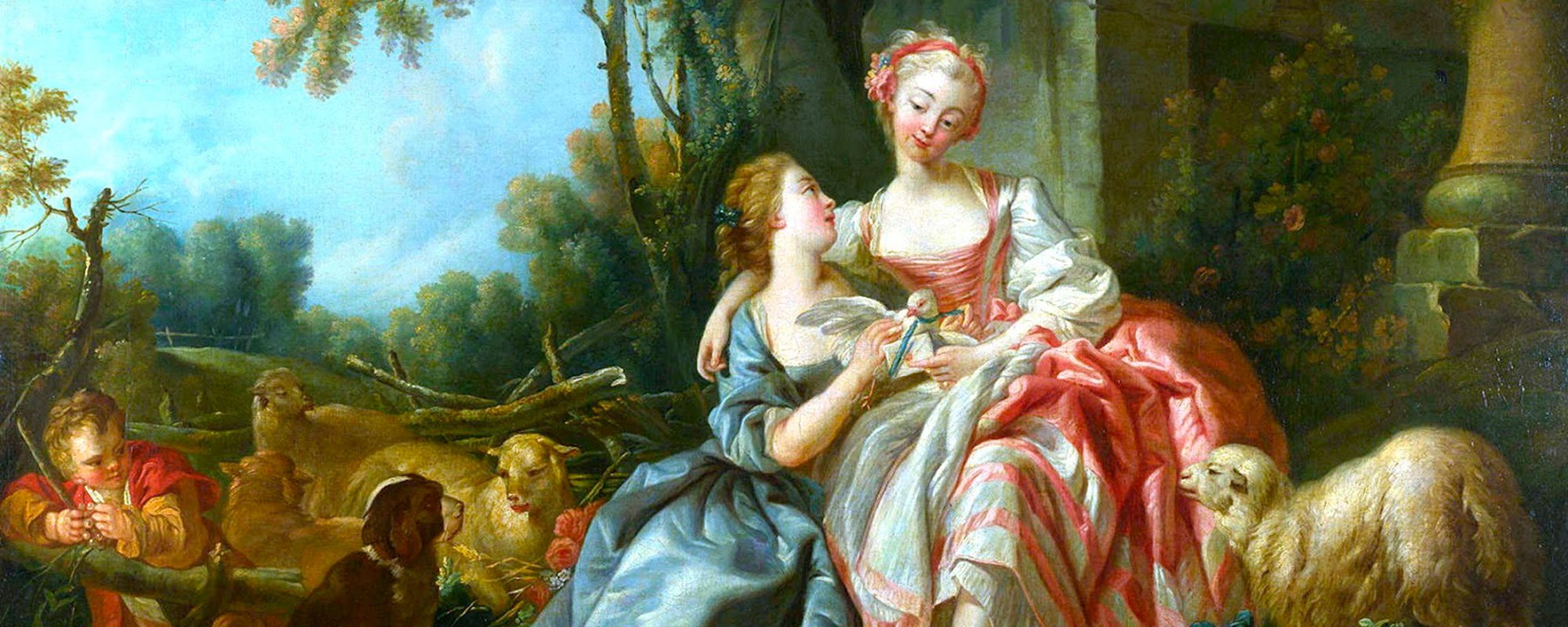How old styles can inspire modern jewellery design
Recently we created a lovely set of earrings. That obviously happens fairly often, but these ones were sort of… special. They consisted of a double curl, sprouting from a diamond. I called them the “Rocaille ear studs” – and what on earth is a “Rocaille”?
A bit of fonetical help here: Rocaille is pronounced [rokaj'] and it’s a design element roughly shaped like a shell. The rocaille describes a curve with a scalloped edge, which was widely used in the 18th century, when the baroque style turned into rococo - and yes: ROCOCO is named after the ROCAILLE. Rococo is one of my favorite periods, which I studied extensively when I spent some years at the department for History of Art at the university. It was the period of powdered wigs, pastel- (and somewhat short) dresses of light silk and a general frivolous lifestyle. Just picture Marie Antoinette from the movie of the same name and you get the gist.

Rococo is extremely ornamented , busy and detailed in a very organic, elegant and airy way. And if it was possible to gild the ornaments, that was almost always done.
You might miss the reflection while studying this stunning piece of a hand mirror. You can look at it for hours from many different angles and keep on discovering new details.
”Goldene Gallerie” in Charlottenburg, Berlin is a dazzling example of the light elegance of the rococo. Its wealth of detail is overwhelming, but because of the height of the ceiling and the slenderness of the ornamentation, the result is still lightweight. The room is coloured with delicate pastels, the turquoise green being the dominant colour, which creates a backdrop for a blush of rose and all the gilded splendour. Gigantic mirrors placed between the many tall glazed doors and windows are mirroring the gold as well as the tapers, which would be placed in the equally ornamented wall mounted candle stick holders. The effect in the evening when the room was filled with grandly dressed nobility and the air being thick of laughter, music and perfume must have been rather enchanting.
It is hard not to linger in here and become very inspired – I for one returned from that Berlin trip with drawings and my very own rococo candle stick holders which now adorn my green walls in the shop – not QUITE the same, of cause, but still…

In our modern time, the all-over-the-place sprouting design of the rococo period can seem very much over the top, but one has to see this in context. Design periods almost always emerge as a reaction to the previous one and the one before rococo was baroque. On a first glance they actually seem very alike – the general fashion style is the same and many decorative ornaments also seem to be the same. However, baroque was, in comparison to the rococo pompous and heavy: The colours were dark, the fabrics heavy (velvet all over if you could afford it) and the most striking difference between the two of them: Everything was strictly symmetrical. The rococo is at its base also symmetrical, but then the strict lines and mirrored effects are broken by meandering ornaments which seem to mock the sternness of the base design (and thereby the previous style).
Then times changed – the Age of Enlightenment began. Science was (for a time at least) come il faut and many new discoveries were made, challenging beliefs and convictions. Rococo mirrored this change, throwing off the restrictions of former times and embracing the new.

Eventually rococo turned into classicism – a much more solemn and again strict style: The symmetry of the baroque reappeared, of cause, since rococo had been all about non-symmetrical designs , but this time everything was simple and square and very inspired by antique times -The classical Greek designs. This was due to the new (re-) discoveries of many ruins in Greece and the Middle East and of cause the French revolution, which basically was a largescale protest against all the frivolous slandering of money and responsibility which the royalty had excelled in. But that is a completely other story.


Alright – back to recent times and my earrings: Having seen the shell-like curve of the rocaille, I am sure you can now gather why these two are linked, though my take on the rocaille is (obviously) different. I have created quite a few earrings based on this motif in various precious metals. Here are some of the very first ones:

Then the design got a bit more character when a customer asked me to apply the coarse surface I am so fond of and for instance use widespread on the Adorabella pieces. It starts to remind of the scalloped version of the rocaille, right?

And THESE in turn inspired another customer to ask me to create a somewhat larger and more detailed version of them: This version features double vines (or rocailles), which sprout from a largish diamond. I love when I get to play with contrasts and nuances. Using white gold without the standard rhodium plating, the two different gold tones are delicate nuances of each other instead of contrasts. However the coarse surface of the white gold enhances the difference even further and creates playful layers of nuances, surfaces and depths.
But you can play on and develop the design further: How about filling the rocaille with bubbles and flowers and suspending a pearl from it?

The rocaille design – boiled down to its simpler more modern version as I do – could be used in other ways too – such as perhaps a pendant

Or a whole collier perhaps? So many possibilities based on one, simple design. I am quite sure that I’m not done working with the rocaille!


 RSS Feed
RSS Feed


